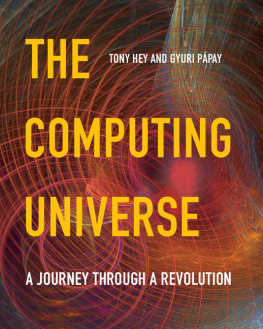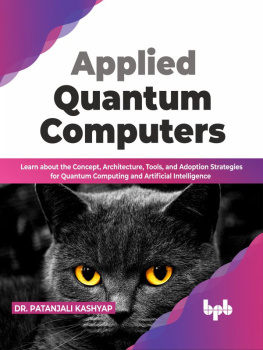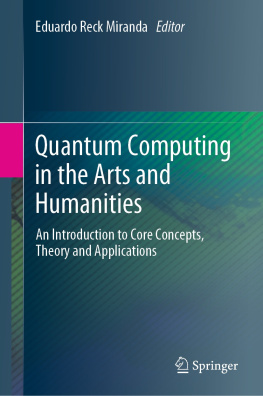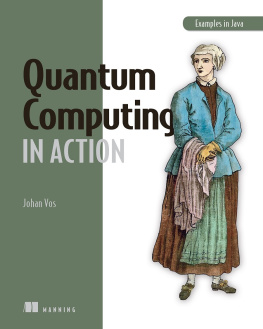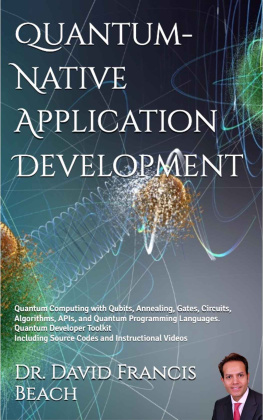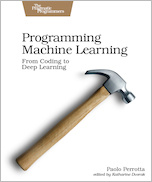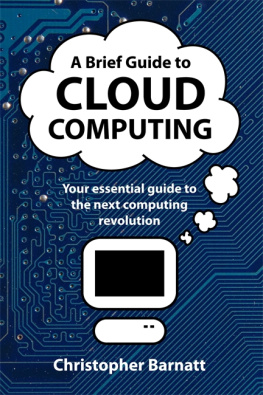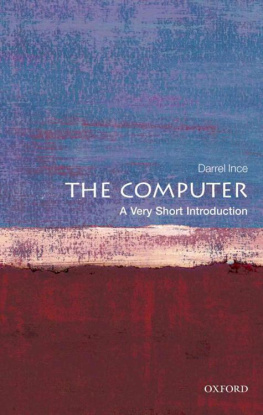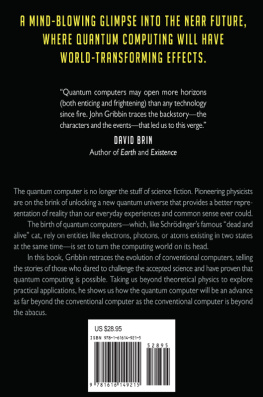Computers now impact almost every aspect of our lives, from our social interactions to the safety and performance of our cars. How did this happen in such a short time? And this is just the beginning....
In this book, Tony Hey and Gyuri Ppay lead us on a journey from the early days of computers in the 1930s to the cutting-edge research of the present day that will shape computing in the coming decades. Along the way, they explain the ideas behind hardware, software, algorithms, Moores law, the birth of the personal computer, the Internet and the web, the Turing Test, IBMs Jeopardy! -beating Watson, World of Warcraft, spyware, Google, Facebook, and quantum computing. This book also introduces the fascinating cast of dreamers and inventors who brought these great technological developments into every corner of the modern world.
This exciting and accessible introduction will open up the universe of computing to anyone who has ever wondered where his or her smart phone came from and where we may be going in the future.
TONY HEY is vice president of Microsoft Research and has published more than 150 research papers and several books, including Gauge Theories in Particle Physics (fourth edition, 2012, with Ian Aitchison), The New Quantum Universe (second edition, 2003, with Patrick Walters), Einsteins Mirror (1997, with Patrick Walters), and The Fourth Paradigm (2009, edited with Stewart Tansley and Kristin Tolle).
GYURI PPAY is a senior research Fellow at the IT Innovation Centre at Southampton University, U.K. His main research interests are high-performance computing, event simulations, and numerical algorithms.
The Computing Universe
A Journey through a Revolution
Tony Hey
Microsoft Research, Redmond, Washington
Gyuri Ppay
IT Innovation Centre, Southampton, U.K.
32 Avenue of the Americas, New York, NY 10013-2473, USA
Cambridge University Press is part of the University of Cambridge.
It furthers the Universitys mission by disseminating knowledge in the pursuit of education, learning, and research at the highest international levels of excellence.
www.cambridge.org
Information on this title: www.cambridge.org/9780521150187
Tony Hey and Gyuri Ppay 2015
This publication is in copyright. Subject to statutory exception and to the provisions of relevant collective licensing agreements, no reproduction of any part may take place without the written permission of Cambridge University Press.
First published 2015
Printed in the United States of America
A catalog record for this publication is available from the British Library.
Library of Congress Cataloging in Publication data
Hey, Anthony J. G.
The computing universe : a journey through a revolution / Tony Hey, Microsoft Research,
Redmond, Washington, Gyuri Ppay, IT Innovation Centre.
pages cm
Includes bibliographical references and index.
ISBN 978-0-521-76645-6 (hardback) ISBN 978-0-521-15018-7 (pbk.)
1. Computer science History. I. Ppay, Gyuri. II. Title.
QA76.17.H49 2014
004.09dc23 2014030815
ISBN 978-0-521-76645-6 Hardback
ISBN 978-0-521-15018-7 Paperback
Additional resources for this publication at www.thecomputinguniverse.org
Cambridge University Press has no responsibility for the persistence or accuracy of URLs for external or third-party Internet web sites referred to in this publication and does not guarantee that any content on such web sites is, or will remain, accurate or appropriate.
Preface
Inspirations
There are many popular books on science that provide accessible accounts of the recent developments of modern science for the general reader. However, there are very few popular books about computer science arguably the science that has changed the world the most in the last half century. This book is an attempt to address this imbalance and to present an accessible account of the origins and foundations of computer science. In brief, the goal of this book is to explain how computers work, how we arrived at where we are now, and where we are likely to be going in the future.
The key inspiration for writing this book came from Physics Nobel Prize recipient Richard Feynman. In his lifetime, Feynman was one of the few physicists well known to a more general public. There were three main reasons for this recognition. First, there were some wonderful British television programs of Feynman talking about his love for physics. Second, there was his best-selling book Surely Youre Joking, Mr. Feynman!: Adventures of a Curious Character , an entertaining collection of stories about his life in physics from his experiences at Los Alamos and the Manhattan atomic bomb project, to his days as a professor at Cornell and Caltech. And third, when he was battling the cancer that eventually took his life, was his participation in the enquiry following the Challenger space shuttle disaster. His live demonstration, at a televised press conference, of the effects of freezing water on the rubber O-rings of the space shuttle booster rockets was a wonderfully understandable explanation of the origin of the disaster.
Among physicists, Feynman is probably best known for Feynman diagrams, the work that brought him his Nobel Prize in 1964. The diagrams constitute a calculational tool kit that enables physicists to make sense of not only Quantum Electrodynamics, the theory that underpins electricity and magnetism, but also of the relativistic quantum field theories believed to describe the weak and strong interactions of elementary particles. But Feynman was not only a great researcher: his Feynman Lectures on Physics are a masterly three-volume introduction to modern physics based on lectures that he gave at Caltech in the 1960s. He was also a visionary: Feynmans after-dinner talk Theres Plenty of Room at the Bottom in 1959 first introduced the ideas of nanotechnology the behavior of devices at length scales approaching atomic dimensions.
By the early 1980s, Feynman had become interested in computing, and for the last five years of his life, he gave a lecture course on computing. In the first two years, he collaborated on an ambitious computing course with two Caltech colleagues, Carver Mead and John Hopfield. In the third year, assisted by Gerry Sussman, a computer scientist on sabbatical from MIT, Feynman gave his own version of the course. The lectures contained a fascinating mixture of standard computer science material plus discussion of the thermodynamics of computing and an analysis of a quantum computer. Before he died, Feynman asked Tony Hey to edit his notes for publication, and the lectures eventually saw the light of day as The Feynman Lectures on Computation . Feynman also acted as a consultant to the Thinking Machines computer company, founded by MIT researcher Danny Hillis.

